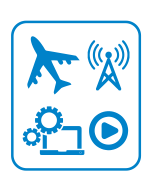Business Model Innovations in the Building Construction Industry, 2020
Business Model Innovations in the Building Construction Industry, 2020
Technological Advancement and a Vision for Sustainability will Drive Change in Building Construction Business Models
17-Jun-2020
Asia Pacific
Description
Asia-Pacific is expected to record substantial building construction development in the next five years despite some impact from the COVID-19 pandemic in 2020. This is mainly impacted by the rapid urbanization and heavy investment in the region.
The building construction industry is facing several challenges such as declined project productivity, workforce scarcity, rising cost of building materials, site safety issues, and an overwhelming number of technological solutions, which complicates decision making in construction processes.
Notable building construction technologies include augmented and virtual reality, 3D printing, building information modelling (BIM), automation and robotics, and wearables and innovative materials. In addition to advances in technology, sustainability trends such as prefabrication construction, sustainable construction, and green building are likely to revolutionize the conventional building construction sector, and consequently disrupt the way business is done. Several innovative business models have emerged. Most innovative business models belong to the Business-to-Business (B2B), Business-to-Consumer (B2C), and Consumer-to-Consumer (C2C) categories. Amongst them, the vertically integrated, servitization (or XaaS) and off-site construction business models are likely to be developed in the next five years.
This study also documents several companies that have successfully adopted innovative business models. These include Doorsteps and PropertyGuru (multi-sided platforms), Plant Prefab (off-site construction), Armstrong World Industries (circular construction), Katerra (vertical integration), and Hilti and TerraDrone (Anything-as-a-Service, XaaS).
This outlook was created over the past several months based on the underlying fundamentals of the industry. While in production, the impact of COVID-19 on the market is beginning to take shape. We are working to address this using a multi-discipline process. Please stay tuned for more intelligence on how the pandemic might change the underlying assumptions and directions of the market.
Growth opportunities identified from this study:
• To invest in building employee capability in operating advanced construction machinery and IT software
• To re-examine the business model of construction companies for the benefits of a more systematic operation and transparent collaborations
with other project participants
• To absorb circular building projects and to establish local prefabrication plants as solutions that drive sustainability in the industry
• To form vertical integration fusing large companies, small and medium-sized enterprises (SMEs), and start-up businesses and offer a one-stop
construction service
• To begin using common platforms such as building information modelling (BIM) in all construction projects
In conclusion, the building construction value-chain will shift from sequential (conventional value chain) to innovative business models, where future value-chain prospects will appear to be interconnected and performed simultaneously.
Building technology companies that provide software offerings with artificial intelligence, data analytics, or cloud capabilities as part of their business model will likely thrive in the post-COVID-19 market. The main goal would be to provide the right technical resources and monetization methods, as customers are likely to be financially troubled after the pandemic.
The logic of the value chain will transform into value networks. This means that the value will be co-created by a combination of building industry participants in the network. It is this knowledge exchange that will drive the proactive production of goods and services, thus bringing changes and innovation to business models in the industry.
RESEARCH: INFOGRAPHIC
This infographic presents a brief overview of the research, and highlights the key topics discussed in it.Click image to view it in full size

Table of Contents
Key Findings
Key Findings (continued)
Scope of Study
Definition of a Business Model
Business Model Approaches
Key Variables of a Business Model
Business Model Categories
Building Construction Industry—Outlook
Asia-Pacific Building Construction Industry by Country
Asia-Pacific Building Construction Industry by Country (continued)
Asia-Pacific Building Construction Industry by Country (continued)
Outlook of Building Construction Industry—Notable Construction Projects in Asia-Pacific
Outlook of Building Construction Industry—Notable Construction Projects in Asia-Pacific (continued)
Outlook of Building Construction Industry—Notable Construction Projects in Asia-Pacific (continued)
Present Value Chain of Building Construction
Present Value Chain of Building Construction Explained
Strategic and Operational Challenges of the Current Building Construction Industry
Strategic and Operational Challenges of the Current Building Construction Industry (continued)
Trends in Building Construction Industry
Trends in the Building Construction Industry—Technology Advancement Prospects
Trends in the Building Construction Industry—Technology Advancement Prospects (continued)
Trends in the Building Construction Industry—Technology Advancement Prospects (continued)
Trends in the Building Construction Industry—Sustainability Prospects
Future Outlook of Building Construction Industry due to Impact of Covid-19 (2020 and Beyond)
Business Model Transformation and Innovations in Building Construction
Business Model 1—Multi-sided Platform (MSP)
Business Model 1—Multi-sided Platform (MSP): Online Estate Agents
Business Model 1—Multi-sided Platform: e-Auction and Online Bidding Services
Business Model 1—Multi-sided Platform: e-Auction and Online Bidding Services (continued)
Global Best Practices—Doorsteps (HQ: UK, Est. 2016)
Global Best Practices—PropertyGuru (HQ: Singapore, Est. 2007)
Business Model 2—Off-Site Construction
Business Model 2—Off-Site Construction (continued)
Global Best Practices—Plant Prefab, Inc. (HQ: USA, Est. 2016)
Business Model 3—Circular Construction
Business Model 3—Circular Construction (continued)
Global Best Practices—Armstrong World Industries, Inc. (HQ: USA, Est. 1891)
Business Model 4—Vertical Integration
Global Best Practices—Katerra Inc. (HQ: USA, Est. 2015)
Business Model 5—Anything-as-a-Service (XaaS)
Business Model 5—Anything-as-a-Service (XaaS): Product-as-a-Service (PaaS)
Business Model 5—Anything-as-a-Service (XaaS): Software-as-a-Service (SaaS)
Business Model 5—Anything-as-a-Service (XaaS): Benefits of Software-as-a-Service (SaaS)
Global Best Practices—Hilti (HQ: Liechtenstein, Est. 2001)
Global Best Practices—Terra Drone Corporation: (HQ: Japan, Est. 2016)
Implications of Business Model Innovations
Implications of Business Model Innovations (continued)
Implications of Business Model Innovations (continued)
Growth Opportunity 1—Investment in the Workforce
Growth Opportunity 2—Business Model Re-examination
Growth Opportunity 3—Circular Building Projects
Growth Opportunity 4—Integration of Construction Verticals
Growth Opportunity 5—Adoption of BIM in Construction Projects
Growth Opportunity 6—Establishing Local Prefabrication Plants
Strategic Imperatives for Success and Growth
The Last Word—3 Big Predictions
Legal Disclaimer
The Frost & Sullivan Story
Value Proposition—Future of Your Company & Career
Global Perspective
Industry Convergence
360º Research Perspective
Implementation Excellence
Our Blue Ocean Strategy
| No Index | No |
|---|---|
| Podcast | No |
| Predecessor | Not applicable |
| Author | Wen Hui Liu |
| Industries | Environment |
| WIP Number | PB0D-01-00-00-00 |
| Is Prebook | No |
| GPS Codes | 9343-A4,GETE |
 USD
USD GBP
GBP CNY
CNY EUR
EUR INR
INR JPY
JPY MYR
MYR ZAR
ZAR KRW
KRW THB
THB


